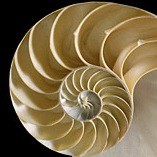The basic statement of tawheed, Allah’s singularity or “oneness,” is لَا إِلَٰهَ إِلَّا اللَّهُ or lā ilāha illā Allāh, explained here. This Basic Tawheed Statement is also the form of the Shahada or Islamic creed declaring there is no god but Allah – the name Allah being a form of the word “god” in Arabic that can only be One God. Since tawheed is the central tenet of Islam – monotheism – this statement is of course central to the Quran’s message.
There are six main variations of it, the most frequent being lā ilāha illā hua or لَا إِلَٰهَ إِلَّا هُوَ, which means “no god except Him,” mentioned in the Quran 30 times (with 4 variations in how this expression is framed). The total mentions of all forms of Tawheed Statement are 40, itself a significant Quranic number. Thus, there are 30 Tawheed Statements containing the words lā ilāha illā hua out of 40 total mentions in the Quran of all variations of Tawheed Statement, a significant {3,4} pairing, a structural pattern in the Quran based on the Arabic name Allah (the Most High). The contexts of these statements give us a range of insight into the meaning of tawheed (oneness/ singularity) itself.
Continue reading


